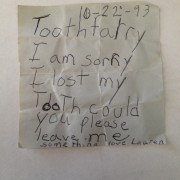What is dry socket?
Dry socket, or alveolar osteitis, is known to happen following a tooth extraction or wisdom teeth extraction. This blood clot serves as a protective layer over the underlying bone and nerve endings in the empty tooth socket. The clot provides the foundation for the growth of new tissue and bone.
In some cases, though, the clot doesn’t form properly or is physically dislodged before complete healing. With the clot gone, bone and nerves in the socket are exposed to air, fluids and food. This can cause intense pain, not only in the socket but also along the nerves radiating to the ear and eye on the same side of your face.
The precise cause of dry socket remains the subject of study. Some researchers suspect that several issues may be at play, including:
Causes of Dry Socket
- Bacterial contamination of the socket
- Severe bone and tissue trauma at the surgical site due to a difficult extraction
- Very small fragments of roots or bone remaining in the wound after surgery
- Drinking from a straw, smoking, or any sort of similar sucking action
- Exercise
- Coughing and sneezing
- Swishing with water
- Drinking carbonated beverages (soda, beer, sparkling water etc.)
Symptoms of Dry Socket after Tooth Extraction
- Severe pain within a few days after a tooth extraction
- Partial or total loss of the blood clot at the tooth extraction site, which you may notice as an empty-looking (dry) socket
- Visible bone in the socket
- Earache
- Eye pain
- Bad breath or a foul odor coming from your mouth
- Unpleasant taste in your mouth
- Swollen lymph nodes around your jaw or neck
- Slight fever
Dry Socket Treatment Options from a Dentist
The treatment of dry socket begins with seeking care from your dentist. Dry socket can be diagnosed by a simple examination to determine a treatment plan specifically for you.
Medications as treatment for dry socket
Dry socket is typically treated with prescription pain-relieving medication, often in the form of medicated dressings that are applied to the teeth. Antibiotics may also be prescribed if an infection is present.
Examples of medical treatments for dry socket include:
- Antibiotics, such as penicillin or erythromycin
- Over-the-counter pain-relieving and fever-reducing medications
- Prescription pain relievers or medicated dressings. These dressings may need to be changed every day for several days, either at home or by your dentist.
In addition to medical treatment, your dentist will inspect and clean the dry socket. If you are experiencing severe pain, a local anesthetic may be used. Getting prompt treatment and completing all the medication prescribed by your dentist are important in preventing complications or recurrence.
What you can do to improve your dry socket
You should contact your dentist if you had a tooth extraction and think you may have a dry socket. Before seeing your health care provider, you may be able to reduce the discomfort associated with your dry socket by:
- Rinsing your mouth with warm salt water
- Taking over-the-counter pain relievers or pain relievers prescribed by your dentist or oral surgeon following extraction
- Using ice packs on the cheek next to the dry socket to decrease pain and swelling
How to Prevent Dry Socket After Wisdom Teeth Removal
After your dental procedure your dentist will go over these things with you but an extra reminder never hurts!
- Activity. After your surgery, plan to rest for the remainder of the day. Resume normal activities the next day, but for at least a week, avoid rigorous exercise and sports that might result in dislodging the blood clot in the socket.
- Beverages. Drink lots of water after the surgery. Don’t drink alcoholic, caffeinated, carbonated or hot beverages in the first 24 hours. Don’t drink with a straw for at least a week because the sucking action may dislodge the blood clot in the socket.
- Food. Eat only soft foods, such as yogurt or applesauce, for the first day. Start eating semisoft foods when you can tolerate them. Avoid hard, chewy, hot or spicy foods that might get stuck in the socket or irritate the wound.
- Cleaning your mouth. Following surgery, you may gently rinse your mouth and brush your teeth, but avoid the extraction site. After the first 24 hours, gently rinse your mouth with warm salt water every two hours while awake and after meals for a week after your surgery. Mix 1/2 teaspoon (2.5 milliliters) of table salt in 8 ounces (237 milliliters) of water.
- Tobacco use. If you smoke, don’t do so for at least 48 hours after surgery. If you chew tobacco, don’t use it for at least a week. Any use of tobacco products after oral surgery can delay healing and increase the risk of complications.
Contact Us for Relief from Dry Socket Pain
If you’re experiencing symptoms of dry socket after a tooth extraction, don’t wait. Prompt treatment can ease your pain and prevent further complications.
Call Dr. Chauvin’s office today to schedule an appointment or ask any questions you may have about your recovery. We’re here to help you heal comfortably and safely.







